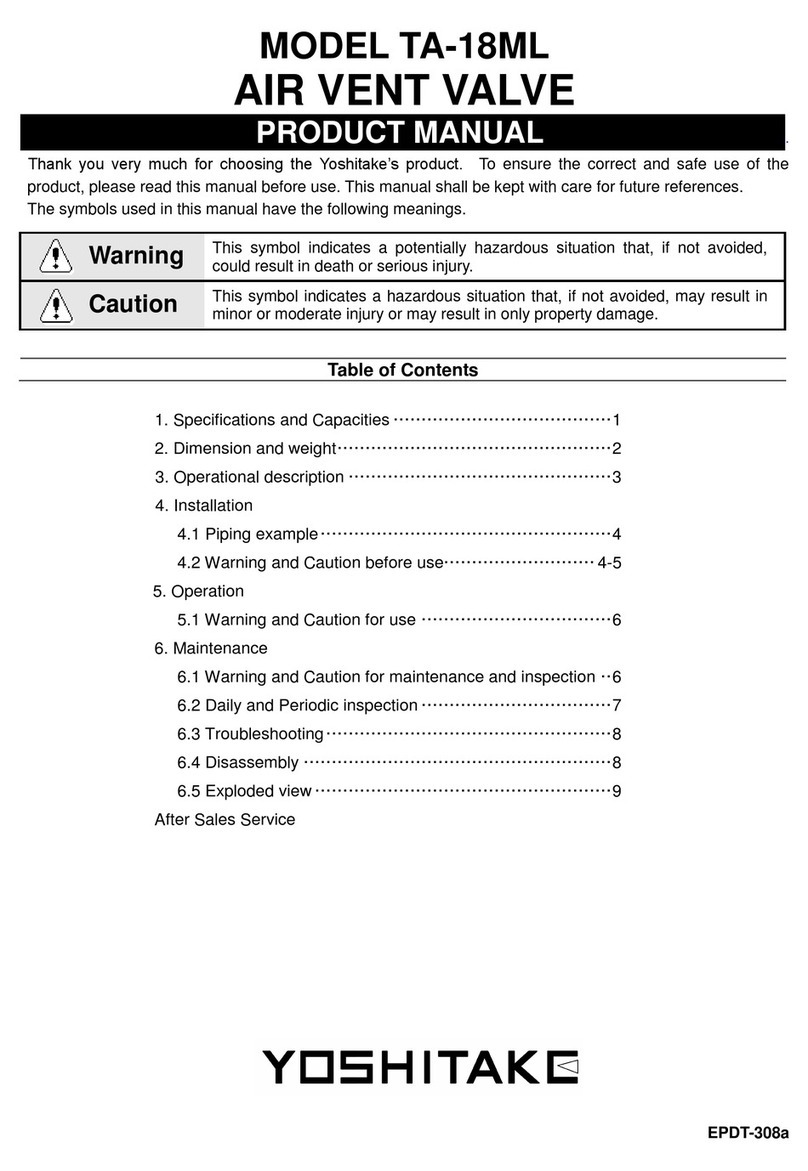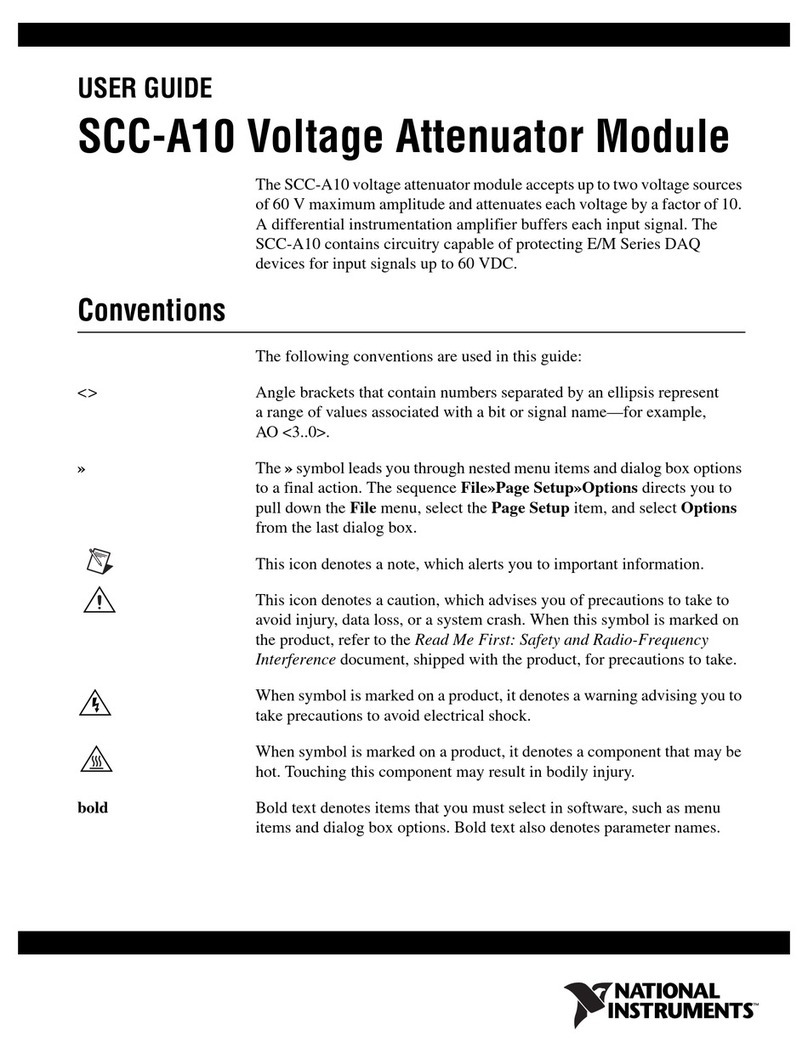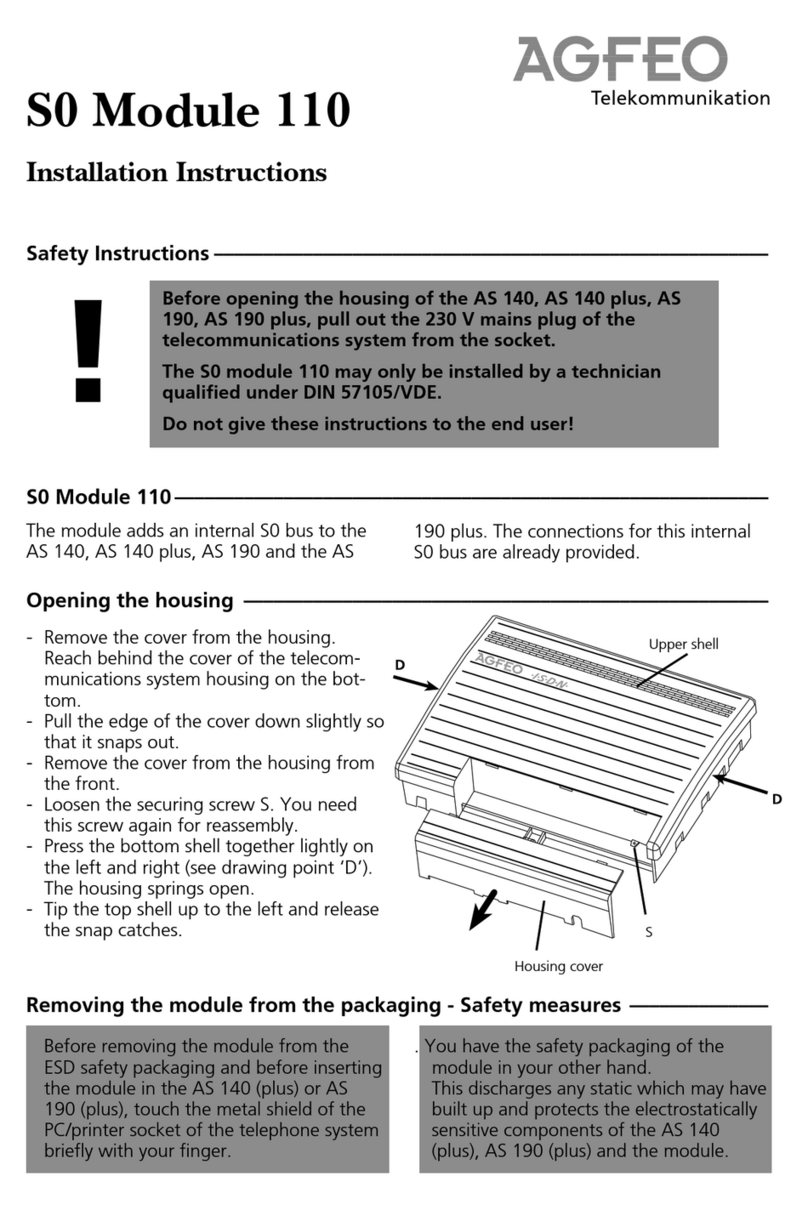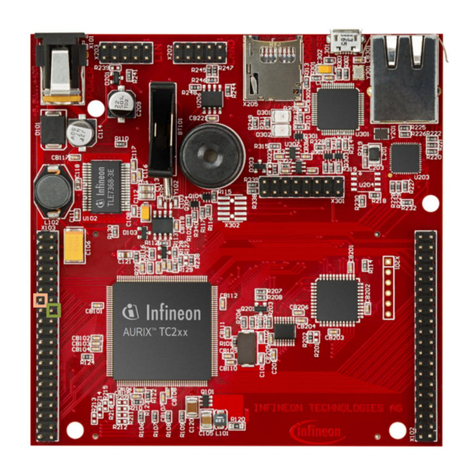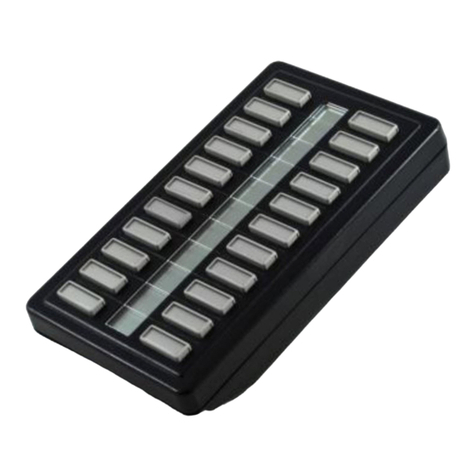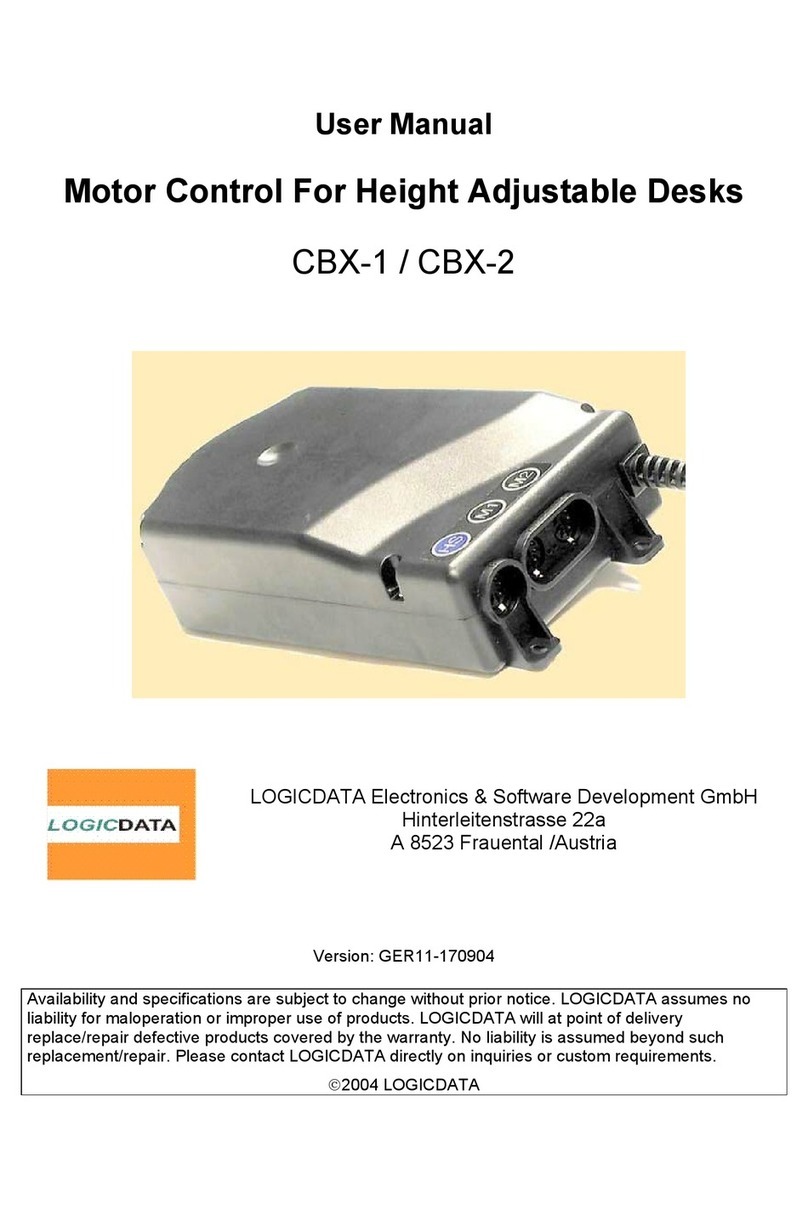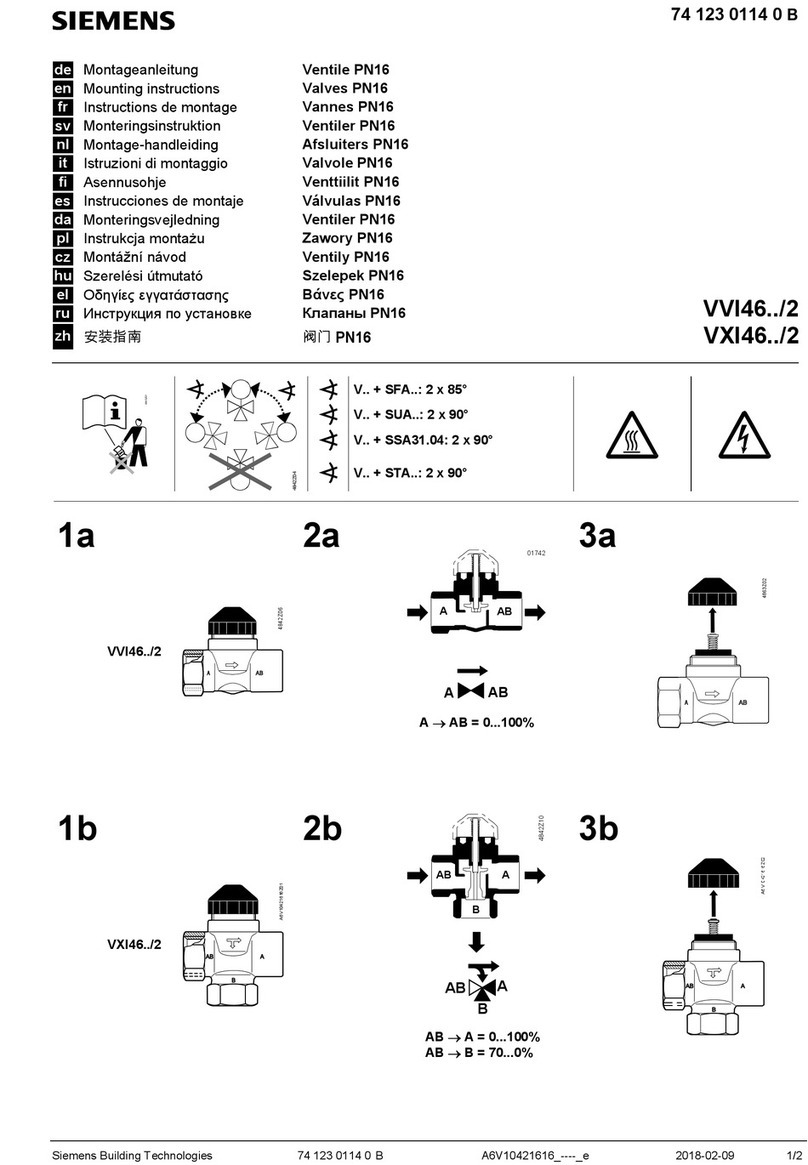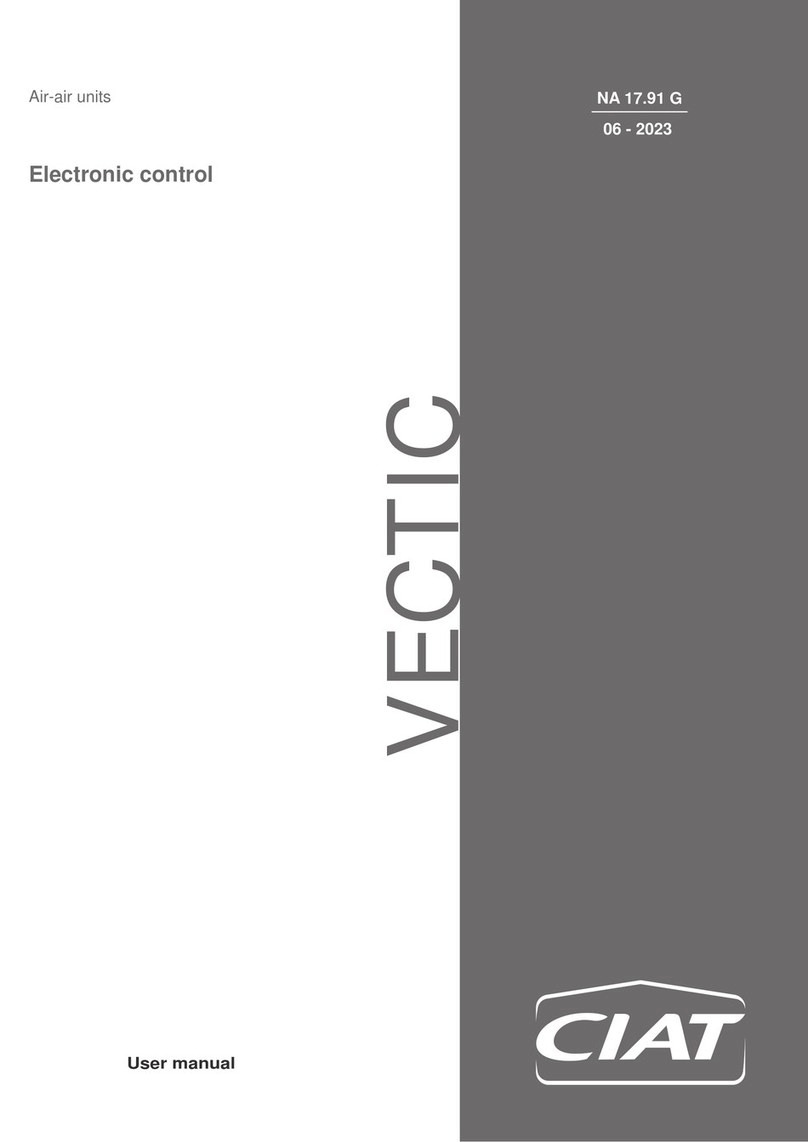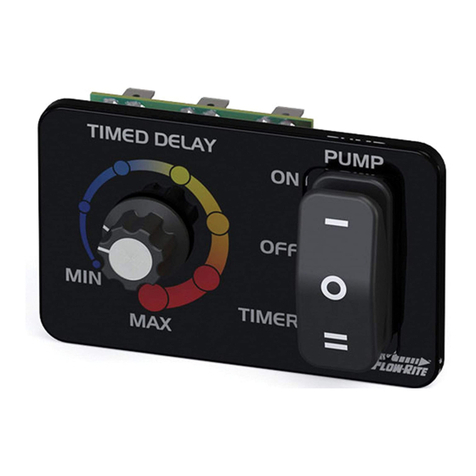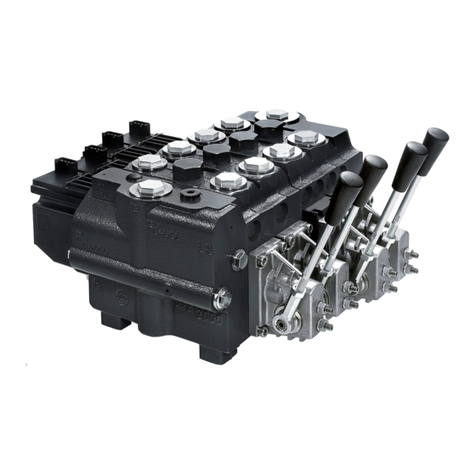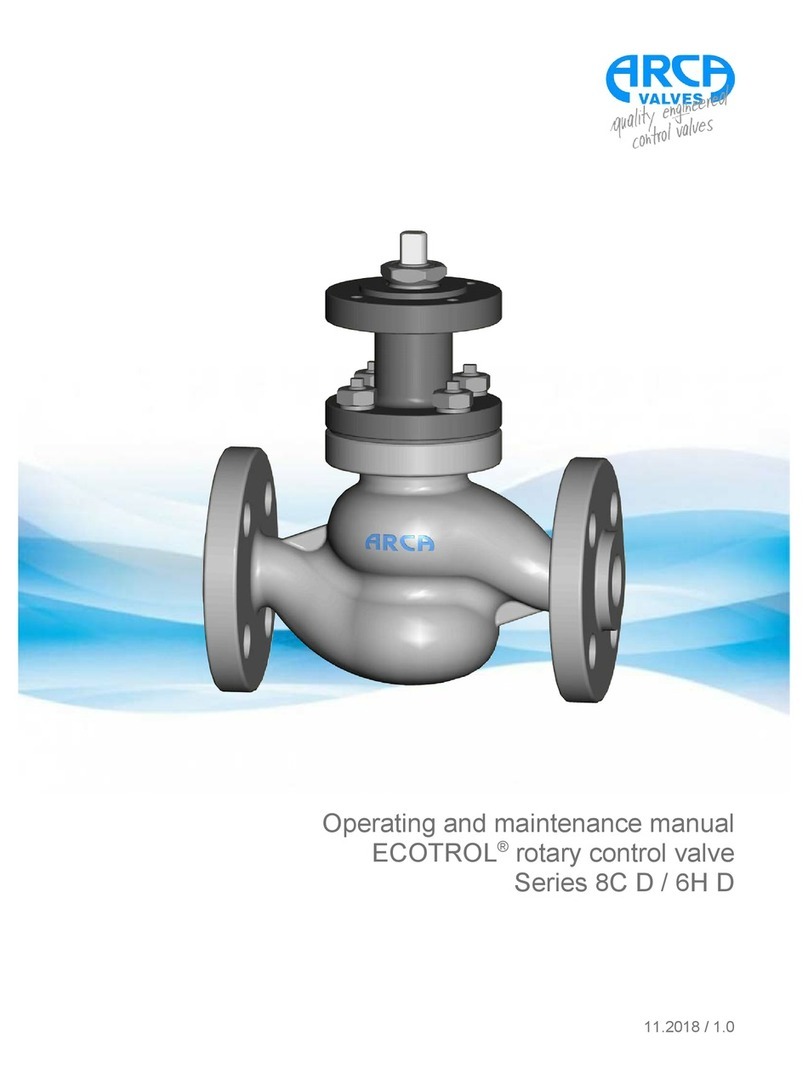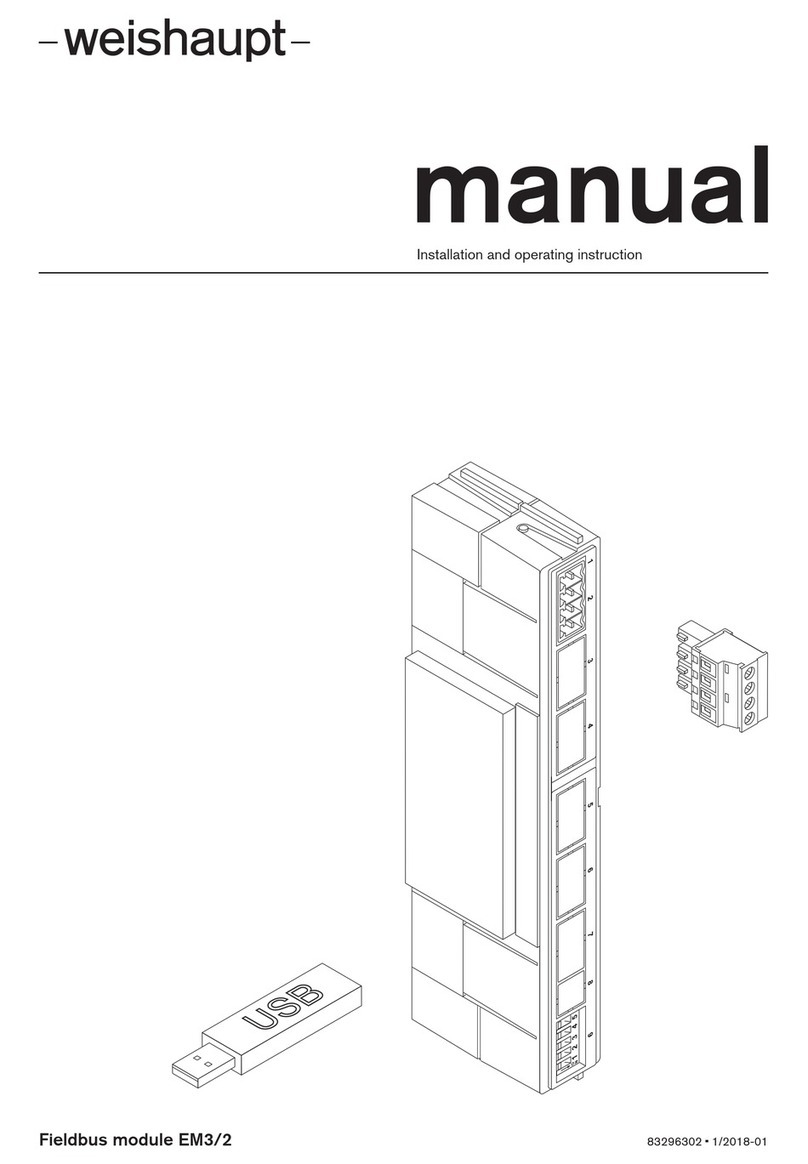Singmai Electronics SM08 User manual

SM08 User Manual Revision 0.1 Page 1 of 22
SM08
Advanced Composite Video Interface:
aCVi Receiver module
User Manual
Revision 0.1
6th March 2020

SM08 User Manual Revision 0.1 Page 2 of 22
Revision History
Date
Revisions
Version
06-03-2020
First Draft.
0.1

SM08 User Manual Revision 0.1 Page 3 of 22
Contents
Revision History........................................................................................................................................2
Contents ...................................................................................................................................................3
Figures ......................................................................................................................................................3
1. Introduction ....................................................................................................................................4
2. aCVi Overview.................................................................................................................................5
3. Connecting up the module .............................................................................................................7
4. Circuit description...........................................................................................................................8
5. Specification..................................................................................................................................19
Appendix A: Power supply specification ................................................................................................20
Figures
Figure 1 SM08 module..............................................................................................................................4
Figure 2 Bayer colour filter. ......................................................................................................................5
Figure 3 Left: Original full resolution image. Right: Image after Bayer demosaicing. ..............................6
Figure 4 aCVi® Modules............................................................................................................................6
Figure 5 SM08 Interconnections...............................................................................................................7
Figure 6 SM08 Schematics - Sheet 1.......................................................................................................10
Figure 7 SM08 Schematics - Sheet 2.......................................................................................................11
Figure 8 SM08 Schematics - Sheet 3.......................................................................................................12
Figure 9 SM08 Schematics - Sheet 4.......................................................................................................13
Figure 10 SM08 Schematics - Sheet 5.....................................................................................................14
Figure 11 SM08 Schematics - Sheet 6.....................................................................................................15
Figure 12 SM08 Schematics - Sheet 7.....................................................................................................16
Figure 13 SM08 Schematics - Sheet 8.....................................................................................................17
Figure 14 SM08 Schematics - Sheet 9.....................................................................................................18
Figure 15 Power supply specification - page 1. ......................................................................................20
Figure 16 Power supply specification - page 2. ......................................................................................21
Figure 17 Power supply specification - page 3. ......................................................................................22

SM08 User Manual Revision 0.1 Page 4 of 22
1. Introduction
aCVi® is a proprietary interface for transmitting high definition video over long distances of coaxial or
twisted-pair cable.
SM08 is a receiver module compatible with the aCVi® Advanced Composite Video Interface format.
SM08 accepts analogue aCVi® encoded video from both twisted pair and low-cost coaxial cable which
it converts to HD-SDI format video.
SM08 supports the following HD standards: 720p-25/30/50/59.94/60Hz and 1080p-
24/25/29.97/30Hz. Switching between standards is automatic.
Figure 1 SM08 module.
The compatible aCVi® transmitter for the SM08 receiver is the SM06 (HD-SDI input).
Other aCVi® modules/boards include:
PT56 aCVi encoder IP core.
PT52 aCVi decoder IP core.
SM02 aCVi video test pattern generator.
For the latest list of available modules follow this link.

SM08 User Manual Revision 0.1 Page 5 of 22
2. aCVi Overview
The following is a brief overview of the aCVi® revision 2 interface (abbreviated to aCVi® in this
document).
aCVi® is a proprietary format, developed by SingMai Electronics, to transmit high definition video over
long distances of coaxial or twisted pair cable. aCVi® is an update to the previous version, specifically
designed to interface directly to image sensors, although it may also be used to transmit conventional
video sources.
A single chip image sensor, as found in almost all non-broadcast cameras, uses a colour filter to
‘assign’ each sensor pixel one of red, green or blue sensitivities. Because green is where the human
eye is most sensitive, there are twice as many green pixels as red and blue (see Figure 2). This means
that if your sensor has a horizontal array of 1920 pixels, only 960 of them are green, red or blue pixels,
and for the red and blue pixels, each horizontal line is either red or blue. The actual resolution of the
sensor to each colour is for green, 960 x 1080 pixels, and for red and blue, 960 x 540 pixels. (A
broadcast camera will use three optically aligned sensors, each offering 1920 x 1080 pixels for the
three colours). If we refer to the full resolution (e.g. a broadcast camera) as 4:4:4 sampled, a single
image sensor actually produces a 2:2:0 output.
Figure 2 Bayer colour filter.
To conform with video standards (e.g. 1920 x 1080) the additional pixels are interpolated (a technique
known as Bayer de-mosaicing) and this function is usually performed in the camera ISP (Image Signal
Processor). However this process can produce artifacts into the image (for example see the colour
artifacts on the white fence in Figure 3), and also, because it generates more than double the amount
of original pixels, more than doubles the bandwidth of the output signal, which exacerbates the
problem if the video is required to transmitted long distances.
aCVi® interfaces directly to the single chip image sensor and transmits the RAW 2:2:0 resolution
image directly, thereby reducing by more than half the bandwidth of the transmitted signal and
achieving higher resolution, lower noise and greater distances.

SM08 User Manual Revision 0.1 Page 6 of 22
Figure 3 Left: Original full resolution image. Right: Image after Bayer demosaicing.
The available aCVi® modules are shown in Figure 4. The SM06 provides an aCVi® transmitter for HD-
SDI or DVI video sources (e.g. a video camera) and simultaneously drives both coaxial and twisted-pair
cable.
The receiver module is the SM08. This module accepts either twisted-pair or coaxial cable and
converts the aCVi® video to an HD-SDI output for a TV monitor or video recorder.
Figure 4 aCVi® Modules.

SM08 User Manual Revision 0.1 Page 7 of 22
3. Connecting up the module
The SM08 module is powered by a universal input (90-260VAC) AC-DC adaptor (see Appendix A for
the power supply specification). The 5VDC, 12W output of this adaptor should be connected to the
jack input, ‘+5V IN’, of the SM08. Once connected, the yellow LED, ‘FPGA OK’ should light, indicating
the FPGA has been correctly configured and the module is running.
Figure 5 shows the interconnections for SM08.
Figure 5 SM08 Interconnections.
The video input is connected to either the coaxial BNC connector or the RJ-45 style twisted pair
connector. Do not connect both cable type inputs at the same time. aCVi®assumes the UTP cable
connections are ‘straight’ so both the transmitter and receiver use pin 1 for the ‘VIDEO+’ (non-
inverted) signal, and pin 2 ‘VIDEO-‘ (inverted) signal.
If the aCVi®input is valid and can be locked to, the yellow ‘Lock’ LED will light –the SM08
automatically detects the input video standard. Once the aCVi®decoder has locked and is
decoding the yellow ‘SDI lock LED’ should light, indicating the HD-SDI output is valid. The HD-SDI
video can then be connected to video monitor or video recorder.

SM08 User Manual Revision 0.1 Page 8 of 22
4. Circuit description
Figures 6-14 show the schematics for the SM08. Below is a brief technical description of the module.
Sheet 1.
J3 is the 5VDC power input connector to the SM08 module. The 5VDC is protected from over-voltage
and reverse polarity inputs by D1, D2 and resettable fuse, F1. The input is then filtered by L1 and C2 to
provide the ‘clean’ 5VDC for the analogue input stage and also linear regulated by U1 and U8 to
provide the 3.3VDC and 2.5VDC supply voltages. U7 provides a power on reset for the FPGA.
Sheet 2.
U2 provides the 1.2VDC for the internal voltage of the FPGA. U3 provides the 2.5VDC for the analogue
PLL circuity of the FPGA and L2 and C25 filter the VCCINT for the FPGA PLL digital blocks.
Sheet 3.
Sheet 3 is the analogue front end (AFE). The aCVi® analogue video inputs may be either coaxial or
twisted pair.
If twisted pair, they are terminated in 100Ω (R26) and converted from differential to single ended
outputs by U9. If coaxial inputs they are treated as a pseudo-differential input, with the ground screen
of the BNC input connector connected to ground via R25 and C61, which affords some hum rejection
for long cable runs. U15 converts this pseudo-differential input to a singled ended output. The two
amplifier outputs are AC coupled and joined together; for this reason only one cable type input should
be connected at one time.
U10 is a voltage-controlled amplifier. The aCVi® decoder measures the amplitude of the synchronizing
signals and compares them to an internal reference: this amplifier compensates for the signal loss in
the cable. The PWM Gain signal from the FPGA is low pass filtered and used to control the gain of
U10.
The output of U10 is AC coupled into U11A, which is a high input impedance, low input bias current
op-amp –U11B is not used for aCVi®. The AC coupled video is set the mid-point of the ADC operating
range (1.5VDC - the ADC requires a 0.5V to 2.5V (2V pk-pk) input signal).
Sheet 4.
U19 is a dual 10 bit, 80MHz ADC. The ADC is used in single-ended mode. The clamped video from
U11A is applied to the VIN+ input of both ADCs, and VIN- input is biased to mid rail (1.5V). U14
provides the ‘clean’ 3.0V supply for the ADC. The output of the ADC, ADC[9:0] is the 2’s complement,
digital composite video which is applied directly to the aCVi decoder. The two ADCs are clocked out of
phase and the outputs multiplexed in the aCVi® decoder. This effectively produces a twice sample
rate output (i.e. 74.25MHz clock produces a 148.5MHz data rate).
Sheet 5.
U4 is the FPGA. The FPGA is an Altera EP4CE15 device in a 144 pin 0.5mm TQFP package. The FPGA
contains the PT52 aCVi® decoder, a SingMai PT13 control microprocessor and the HD-SDI output
encoder.
Sheet 6.
The FPGA is a volatile device and needs configuring at switch on, which it does using U5, a 4Mb
EEPROM. The device is automatically configured on switch on, and successful configuration is
indicated by LED, ‘FPGA OK’. The EEPROM may also be reprogrammed via J4, which is compatible with
the Altera ‘USB-Blaster’ and the Quartus Programmer.
Sheet 7.
The PT52 aCVi decoder requires a line locked clock. This is achieved using a voltage-controlled crystal
oscillator, with the frequency of the oscillator controlled using a PWM output from the PT52 IP core.
This output, VCO_PWM, is filtered by R14 and C31 to provide an analogue voltage which is buffered
by U6. The resulting 0-3.3V control voltage adjusts the frequency of the crystal voltage-controlled

SM08 User Manual Revision 0.1 Page 9 of 22
oscillator (VCXO), X1. The adjustment range is approximately ±150ppm. The centre frequency
(1.65VDC control voltage) is 27.0MHz.
The output of the VCXO is then multiplied to 74.25MHz or 74.18MHz (to provide support for
29.97/59.94Hz formats) –selection is performed via the FREQ_SEL.
The ‘LOCK’ LED is driven from a port of the FPGA. It is lit when the aCVi® decoder status indicates that
horizontal lock has been achieved and the input is a valid standard supported by the decoder.
U17 is an RS232 level translator. The RS232 data interface is not enabled at this time.
Sheet 8.
This sheet is not currently fitted.
Sheet 9.
The Y, Cb and Cr video and the Hout, Vout and Fout synchronizing signals from the aCVi decoder are
formatted into an HD-SDI signal inside the FPGA. The synchronizing signals are modified to be
compatible with the HD-SDI Flag requirements and the line count is derived. The video and the timing
signals (TRS) are combined and scrambled according to the HD-SDI specification and cyclic
redundancy check (CRC) is added.
The scrambled signal is then multiplexed into 5 data streams at 148.5MHz which are driven as LVDS
outputs, together with an LVDS clock, to the HD-SDI serialiser IC, U18, which converts these five data
signals into one 1.485GHz, HD-SDI compatible, output (J9).

SM08 User Manual Revision 0.1 Page 10 of 22
Figure 6 SM08 Schematics - Sheet 1.

SM08 User Manual Revision 0.1 Page 11 of 22
Figure 7 SM08 Schematics - Sheet 2.

SM08 User Manual Revision 0.1 Page 12 of 22
Figure 8 SM08 Schematics - Sheet 3.

SM08 User Manual Revision 0.1 Page 13 of 22
Figure 9 SM08 Schematics - Sheet 4.

SM08 User Manual Revision 0.1 Page 14 of 22
Figure 10 SM08 Schematics - Sheet 5.

SM08 User Manual Revision 0.1 Page 15 of 22
Figure 11 SM08 Schematics - Sheet 6.

SM08 User Manual Revision 0.1 Page 16 of 22
Figure 12 SM08 Schematics - Sheet 7.

SM08 User Manual Revision 0.1 Page 17 of 22
Figure 13 SM08 Schematics - Sheet 8.

SM08 User Manual Revision 0.1 Page 18 of 22
Figure 14 SM08 Schematics - Sheet 9.

SM08 User Manual Revision 0.1 Page 19 of 22
5. Specification
Power: +5VDC ± 5% @ ~620mA.
Dimensions: 120mm x 78mm x 27mm.
HD-SDI output: SMPTE-292M, 20 bit 4:2:2 YCbCr format.
Video standards: 720p/25Hz,720p/30Hz, 720p/50Hz, 720p/59.94Hz, 720p/60Hz
1080p/25Hz, 1080p/29.97Hz, 1080p/30Hz.
Luma bandwidth: 14MHz ± 1dB. >-50dB @ 17.6MHz.
Chroma bandwidth: 14MHz ± 1dB. >-40dB @ 17.6MHz.
Transmission distance: >300m of RG-59 coaxial cable. >500m RG-59 cable
with reduced luma bandwidth.
Latency: <100µs (transmitter HD-SDI input to receiver HD-SDI output).
Operating temperature: -10° to +45°degC.

SM08 User Manual Revision 0.1 Page 20 of 22
Appendix A: Power supply specification
The AC-DC converter supplied with the SM06 is a model TE10A0503F01 from SL Power Electronics. It
accepts all AC inputs from 90-264VAC and provides a 5V, 2A DC output for the SM06. The detailed
specification is shown below.
Figure 15 Power supply specification - page 1.
Other manuals for SM08
1
Table of contents
Popular Control Unit manuals by other brands

NI
NI PXI-6682 user manual
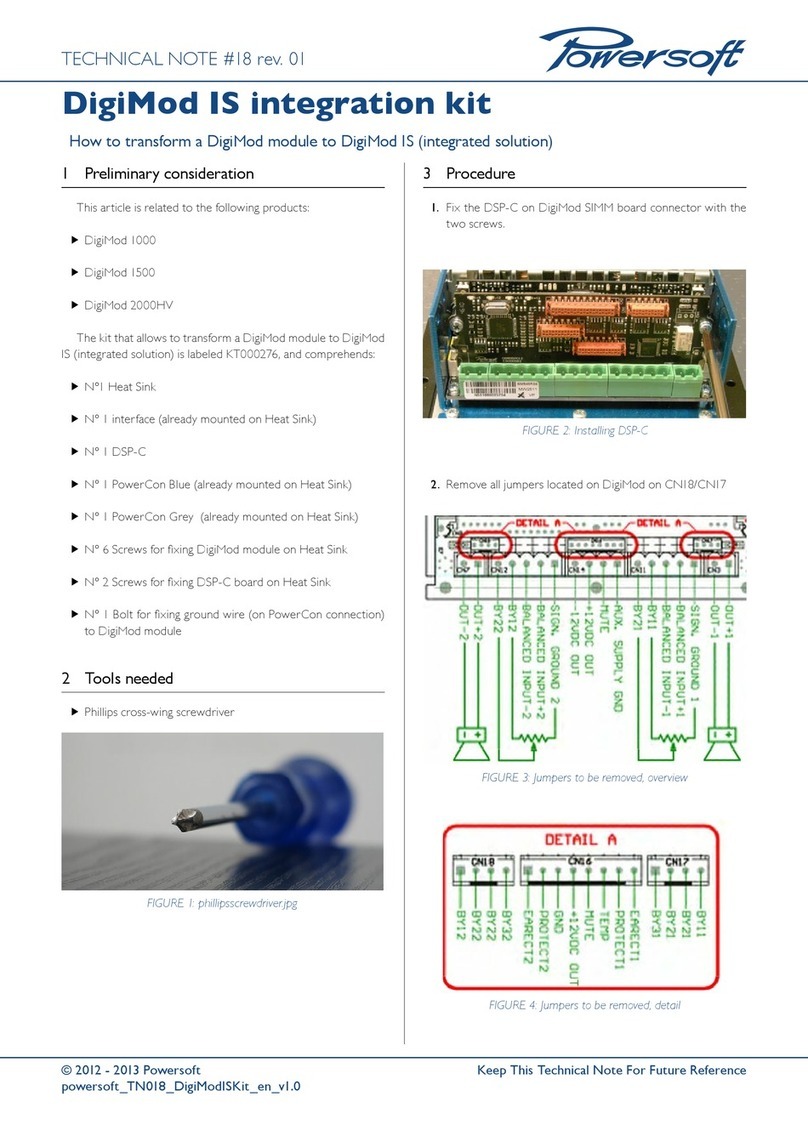
powersoft
powersoft DigiMod IS integration kit Technical note

GEM
GEM 534 Installation, Operating and Maintenance Instruction
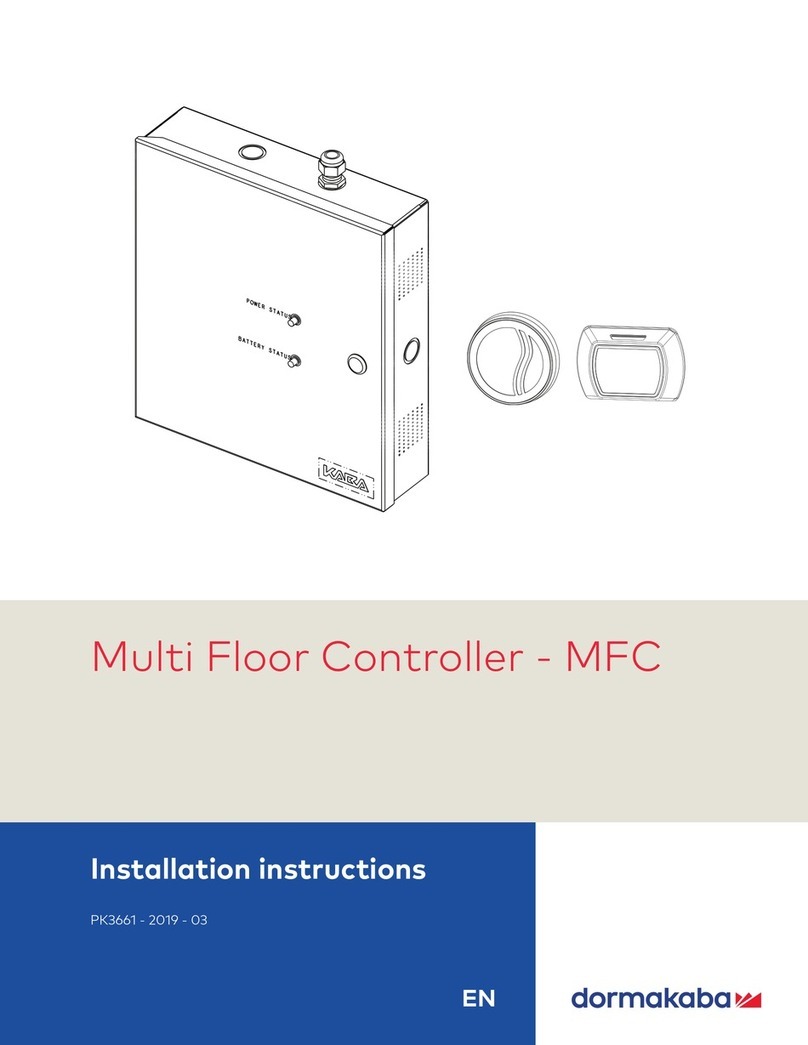
Dormakaba
Dormakaba MFC installation instructions

Honeywell
Honeywell DirectLine DL421 user manual
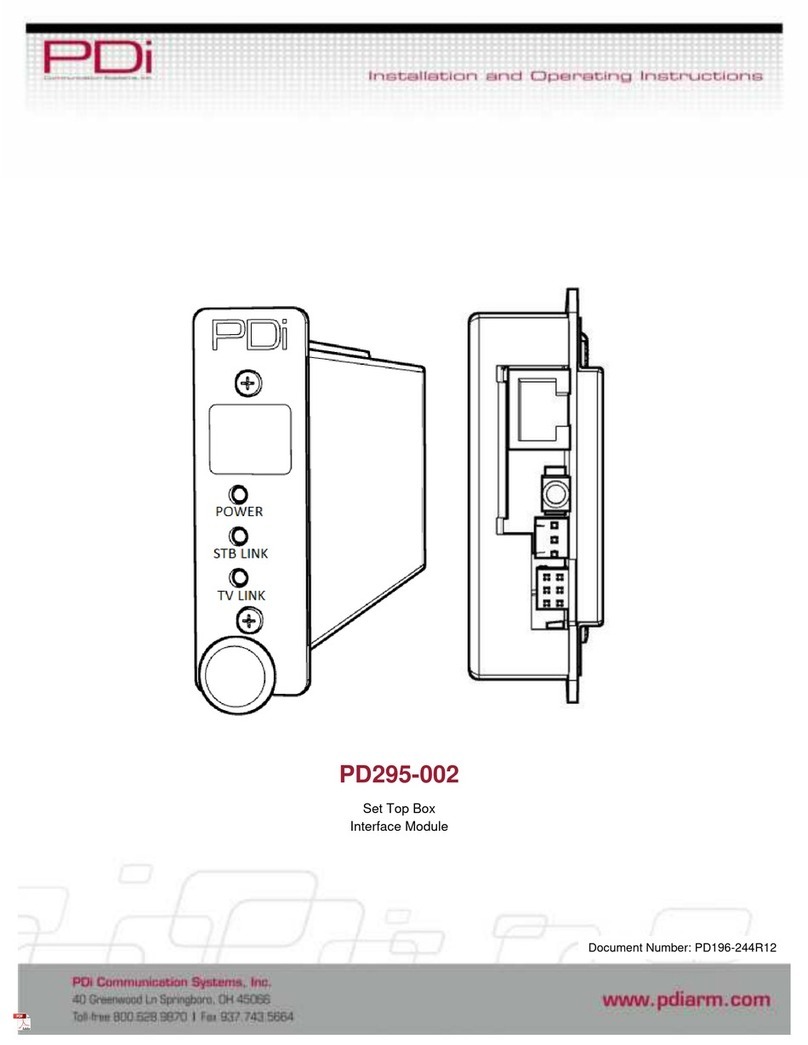
PDi
PDi PD196-244R12 Installation and operating instructions
